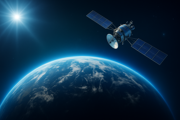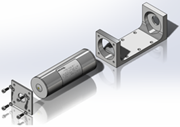

BOEING 737 MAX COMMUNICATION (ATA 23) MODIFICATIONS (8)
B737 NG SBAS GNSS Aircraft Integration by Fokker Services



Overview
Fokker Services offers a certified solution for the integration of Satellite-Based Augmentation Systems (SBAS) and Global Navigation Satellite Systems (GNSS), supporting modern navigation, surveillance, and performance-based operations. This upgrade ensures compliance with global mandates while delivering operational efficiency and precision.
Certified DE-modification of Obsolete or Custom STC Installations


As part of lease return, phase-out, or aircraft transition processes, removal or reversal of previously installed STCs is often required. These could include obsolete systems, lessee-specific modifications, or customer-tailored configurations no longer applicable for the next operator.
Fokker Services provides certified engineering support for the full demodification process, ensuring compliance, traceability, and airworthiness restoration aligned with the requirements of the new lessee or owner.
Bose A30 Noise Cancelling Aviation Headset


The Bose A30 Noise Cancelling Aviation Headset (boomset) represent the next advancement in aviation comfort and safety. This headset introduces advanced noise cancellation technology, promising an improved in-flight experience.
Gogo Galileo LEO (Low Earth Orbit) Satcom system installation


Gogo Galileo sets a new standard for global inflight connectivity, delivering high speed, low latency internet to every business aircraft, regardless of size or geography. Engineered exclusively for business aviation, Galileo redefines what's possible at 40,000 feet.
SpaceX Starlink for aviation - high speed internet in flight


Starlink provides high-speed, low-latency internet on tens of thousands of flights and counting, keeping passengers connected from the moment they step onboard their aircraft and througout their travels all around the world.
Fokker Services ULD (Underwater Locator Device) for Boeing aircraft



Events related to aircraft missing over oceanic areas have led to several new requirements, amongst which is the introduction of a stand-alone long-range Underwater Locator Device (ULD). Based on this requirement, we are pleased to provide you our offer, which is based on the delivery an integrated package including all related documentation and materials. Note that the ULD is not to be confused with the Underwater Locator Beacons (ULB) as installed on the CVR and FDRs. The ULD is complementary to the ULB and is mounted to the aircraft structure.
Our ULD mod will be mounted on the aircraft structure free of sound absorbent materials and not in wing sections or empennage, we certified multiple locations in a variety of aircraft types. The installation is in accordance with ARINC specification 667, which describes the removal, installation and maintenance aspects of an ULD installation.
Active noise reduction flight crew headsets installation

ECM offers a fully managed and tailored solution to install approved flight crew headsets, taking into account your operational requirements and previous installation constraints


